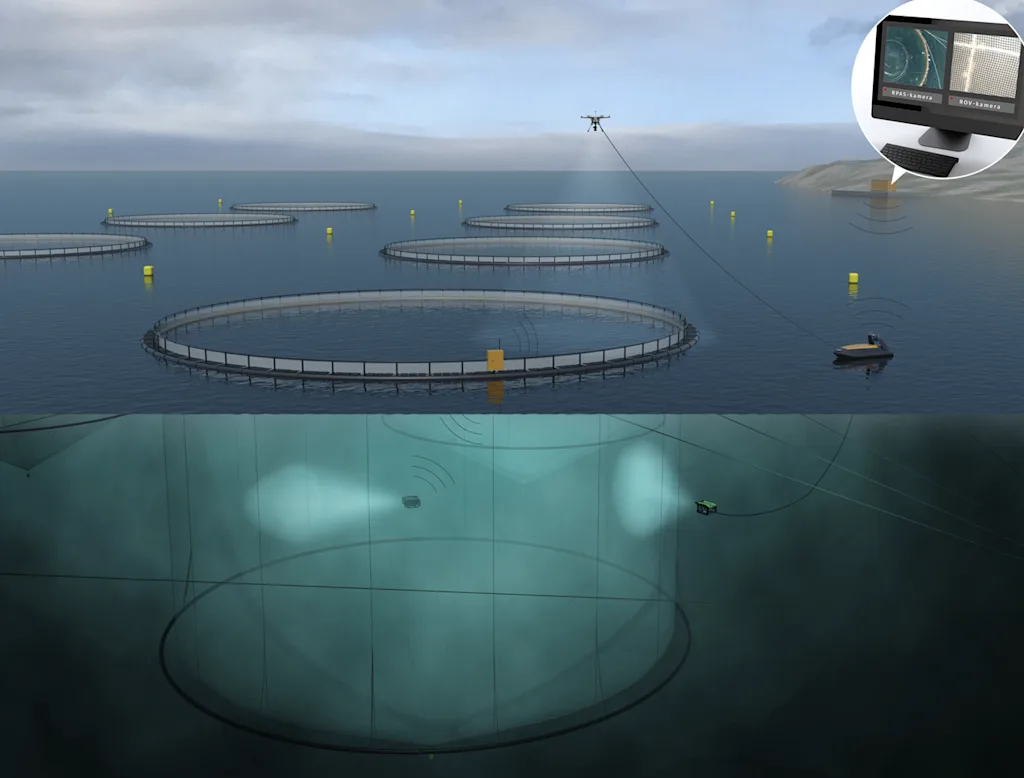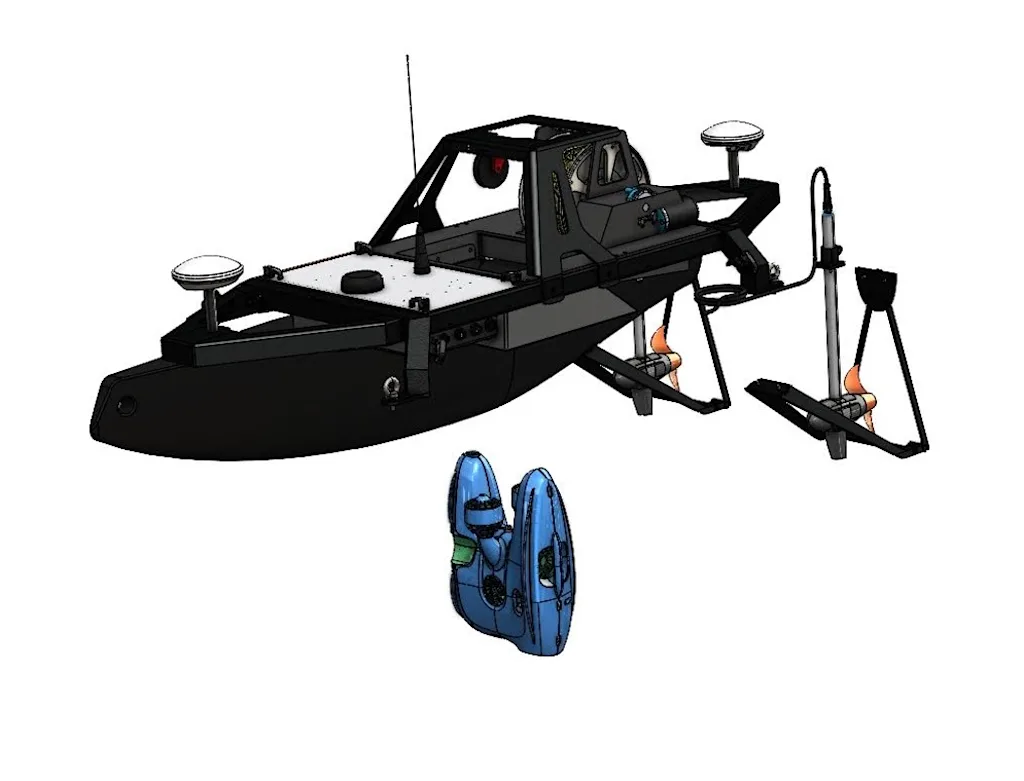WHAT USE-CASES CAN AN UNMANNED SURFACE VEHICLE (USV) AND AN UNDERWATER DRONE SOLVE?
USVs run on the water surface and can be operated directly through software systems or be programmed to follow a defined path, such as lawnmower robots do. Combining a USV with an underwater drone can expand the area for data collection by providing clear visuals and the possibility to get close to objects deep below the surface.
Reach Subsea (in cooperation with Kongsberg Maritime and Massterly) announced earlier this year some of their plans behind a project called Reach Remote:
The first stage of the project is to introduce Unmanned Surface Vehicles (USVs) dedicated to surveying, inspection, and light repair projects. The USVs will serve as mobile power banks, data centers, and communication modules for underwater ROVs (Remotely Operated Vehicles), with both the USVs and ROVs operated from an onshore control center. - Reach Remote Project
Reach Subsea envisions their Reach Remote project to be applied especially in offshore segments such as oil rigs and wind farms. Still, they also see the potential for their solution within other markets, such as aquaculture, subsea mining, and environmental surveillance.

SINTEF, a renowned Norwegian research institution, has, through their Artifex project, looked into how USVs can be a carrier of both subsea and airborne vehicles for remote operation at fish farms.
The project achieved great results by developing robot technology that can render inspection operations at fish farms (aerial, surface, and subsea) more systematic and more autonomous, hence limiting the requirements for on-site manning and potentially transferring more tasks to remote operation centers. - sintef.no
CAN THE BLUEYE UNDERWATER DRONE BE INTEGRATED IN A USV?
During Aqua Nor 2021, we held an event together with a fellow Trondheim-based technology company named Maritime Robotics. Together we invited our network to socialize and listen to a project we are slowly working on together.

Maritime Robotics' advanced technology allows for data collection from high up in the air and deep down below the water surface. Their products, such as the Otter and Mariner USVs, are used by professionals such as the UK Royal Navy, Norwegian Armed Forces and researchers from several universities. The main use-cases are seabed mapping, environmental monitoring and harbor security.

Students from the prominent Norwegian University of Science and Technology (NTNU) have continued the Artifex project by looking into how a Blueye underwater drone can be integrated and deployed from an Otter USV. There are several use-cases where an ROV operator would be at risk when deploying an underwater drone and where a USV wouldn't be enough. An underwater drone from Blueye can dive down to over 300 m and share live video footage as you go, even online via Microsoft Teams. It's also possible to connect external equipment using the Blueye X3 ROV, such as manipulators to grab samples or retrieve objects.

There are for sure interesting development projects going on within the marine robotics field. While this particular project with Maritime Robotics is in its very early phase, it's a beginning of an exciting future for remote underwater inspections and data collection.
